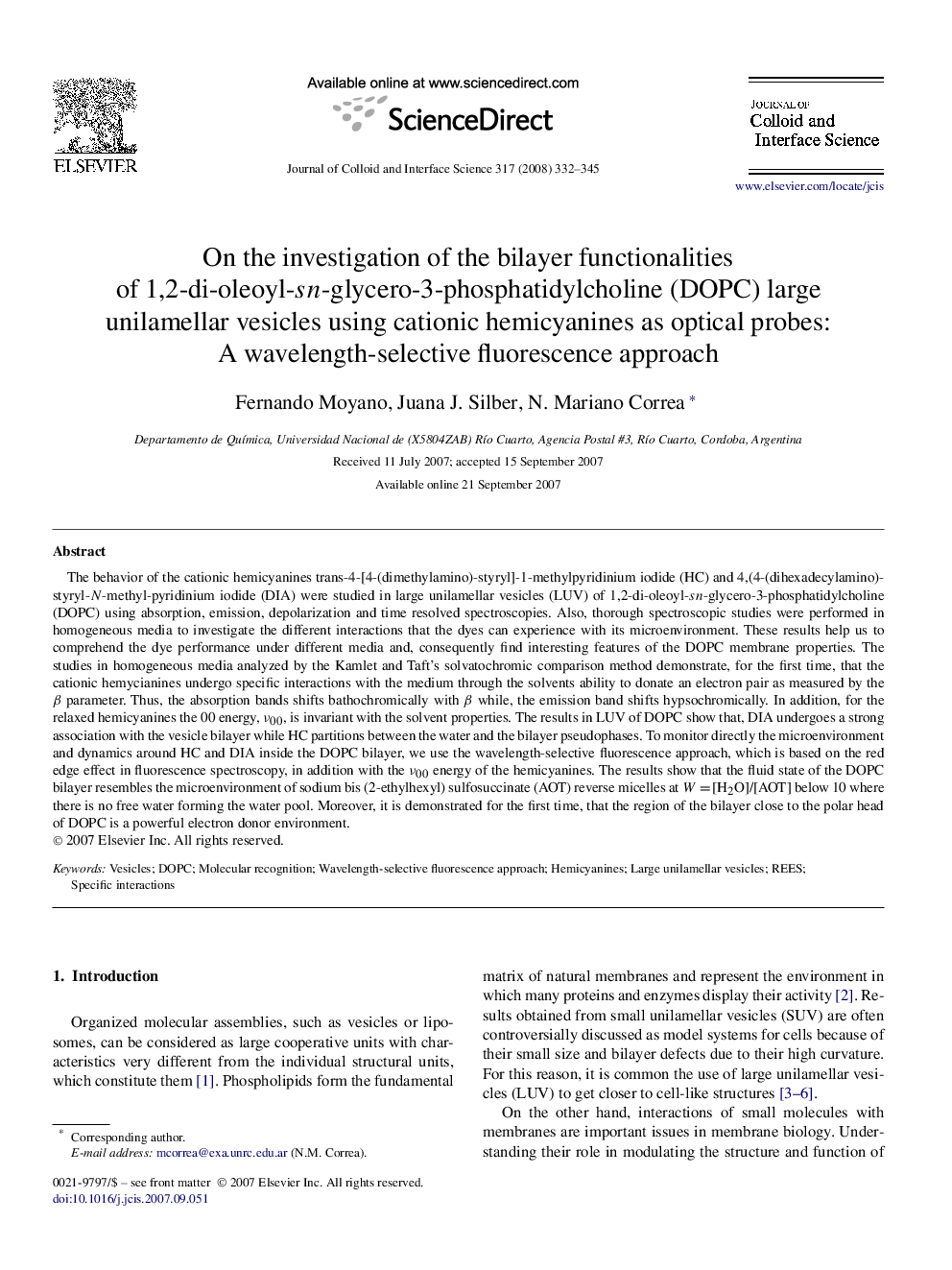| Article ID | Journal | Published Year | Pages | File Type |
|---|---|---|---|---|
| 611897 | Journal of Colloid and Interface Science | 2008 | 14 Pages |
The behavior of the cationic hemicyanines trans-4-[4-(dimethylamino)-styryl]-1-methylpyridinium iodide (HC) and 4,(4-(dihexadecylamino)styryl-N-methyl-pyridinium iodide (DIA) were studied in large unilamellar vesicles (LUV) of 1,2-di-oleoyl-sn-glycero-3-phosphatidylcholine (DOPC) using absorption, emission, depolarization and time resolved spectroscopies. Also, thorough spectroscopic studies were performed in homogeneous media to investigate the different interactions that the dyes can experience with its microenvironment. These results help us to comprehend the dye performance under different media and, consequently find interesting features of the DOPC membrane properties. The studies in homogeneous media analyzed by the Kamlet and Taft's solvatochromic comparison method demonstrate, for the first time, that the cationic hemycianines undergo specific interactions with the medium through the solvents ability to donate an electron pair as measured by the β parameter. Thus, the absorption bands shifts bathochromically with β while, the emission band shifts hypsochromically. In addition, for the relaxed hemicyanines the 00 energy, ν00ν00, is invariant with the solvent properties. The results in LUV of DOPC show that, DIA undergoes a strong association with the vesicle bilayer while HC partitions between the water and the bilayer pseudophases. To monitor directly the microenvironment and dynamics around HC and DIA inside the DOPC bilayer, we use the wavelength-selective fluorescence approach, which is based on the red edge effect in fluorescence spectroscopy, in addition with the ν00ν00 energy of the hemicyanines. The results show that the fluid state of the DOPC bilayer resembles the microenvironment of sodium bis (2-ethylhexyl) sulfosuccinate (AOT) reverse micelles at W=[H2O]/[AOT] below 10 where there is no free water forming the water pool. Moreover, it is demonstrated for the first time, that the region of the bilayer close to the polar head of DOPC is a powerful electron donor environment.
Graphical abstractSchematic diagram of half of the LUV DOPC bilayer showing the motional environment of the bilayer.Figure optionsDownload full-size imageDownload as PowerPoint slide
